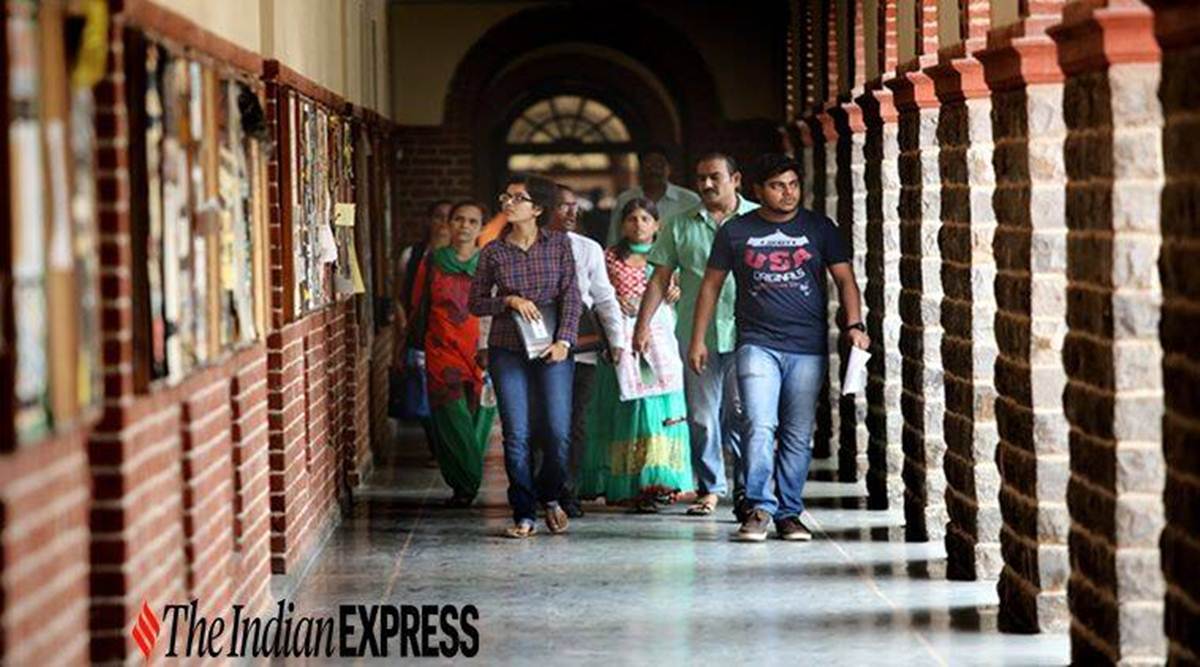 In 2017-18, there were 100 women for every 100 men in B.Sc and 101 women for every 100 men in undergraduate medicine. This has now increased to 113 women for 100 men in B.Sc and 110 women for 100 men in MBBS programmes in just two years.
In 2017-18, there were 100 women for every 100 men in B.Sc and 101 women for every 100 men in undergraduate medicine. This has now increased to 113 women for 100 men in B.Sc and 110 women for 100 men in MBBS programmes in just two years. Two years after the gender gap closed in undergraduate science, for the first time, there are as many women as there are men enrolled in the Bachelor of Commerce (B.Com) programme, according to the latest findings of the All India Survey on Higher Education (AISHE).
Until five years ago, there were 90 female students enrolled in B.Com for every 100 men. However, in 2019-20 there were 100 women for every 100 male students in this programme. In absolute numbers, in 2019-20, 41.6 lakh were enrolled in B.Com, of which 20.3 lakh were women and 21.3 lakh were men.
This is the third major programme in the last five years where the gender gap in enrolment has closed after it happened in B.Sc and MBBS programmes in 2017-18. In fact, since then, women have started dominating enrolment in undergraduate science and medical programmes.
In 2017-18, there were 100 women for every 100 men in B.Sc and 101 women for every 100 men in undergraduate medicine. This has now increased to 113 women for 100 men in B.Sc and 110 women for 100 men in MBBS programmes in just two years.
The gender composition of student enrolment in male-dominated programmes is changing rapidly with more and more women entering higher education. Overall, for every 100 male students, the number of women has increased from 86 in 2015-16 to 96 in 2019-20.
The survey confirms the trend of the last five years: an increase in higher education enrolments. Yet, the findings are of 2019-20, before the pandemic forced colleges to shut down and shift to virtual learning. Next year’s survey will offer a better picture of the impact of the pandemic on dropouts, enrolments.
In other words, while the Gross Enrolment Ratio (GER) of India has increased from 24.5% in 2015-16 to 27.1% in 2019-20, a significant portion of this change comes from the female side. The GER for men has gone up from 25.4% to 26.9% over the last five years and the increase is much sharper for women — from 23.5% in 2015-16 to 27.3% in 2019-20.
The GER is a statistical measure for determining the number of students enrolled in undergraduate, postgraduate and research-level studies within the country and expressed as a percentage of the population in the 18-23 years age group.
However, even as there are encouraging signs for female participation in some programmes, many still need to catch up. For instance, in B.Tech programmes, there are just 42 women enrolled for every 100 men and in undergraduate law programmes, it’s 53 female students for 100 men.
The total enrolment in higher education stood at 3.85 crore in 2019-20 as compared to 3.74 crore in 2018-19, registering a growth of 11.36 lakh (or 3.04 per cent). In 2014-15, this figure was at 3.42 crore.
Of the 3.85 crore students, 3.06 crore are studying at the undergraduate level, which is 79.5% of the total enrolment. After that, 43.1 lakh students or 11.2% are enrolled for postgraduate studies and 2.02 lakh for PhD.
Overall, the number of students has increased across major disciplines, except engineering. At the undergraduate level, the enrolment for engineering programmes has witnessed a sharp drop of 1.25 lakh, from 38.5 lakh last year to 37.2 lakh. The decline can be attributed majorly to mechanical engineering, electronics engineering, civil engineering, electrical engineering and mining.
At the postgraduate level too, the number of students pursuing engineering has decreased — from 1.8 lakh to 1.77 lakh. However, the trend gets reversed in research where the engineering discipline continues to grow and produce the highest number of doctorates (from 41,869 to 52,478).
At a time when Indian institutions are competing to figure in world rankings, there hasn’t been much progress in the internationalisation of education in the country. There is a marginal improvement in the number of foreign students – 47,427 in 2018-19 to 49,348 in 2019-20. The highest share of foreign students come from the neighbouring countries, of which Nepal is 28.1% of the total, followed by Afghanistan 9.1%, Bangladesh 4.6%.
AISHE findings are based on the responses of 1,019 universities, 39,955 colleges and 9,599 standalone institutions. There are a total of 1,043 universities, 42,343 colleges and 11,779 standalone institutions in the country.
- The Indian Express website has been rated GREEN for its credibility and trustworthiness by Newsguard, a global service that rates news sources for their journalistic standards.

